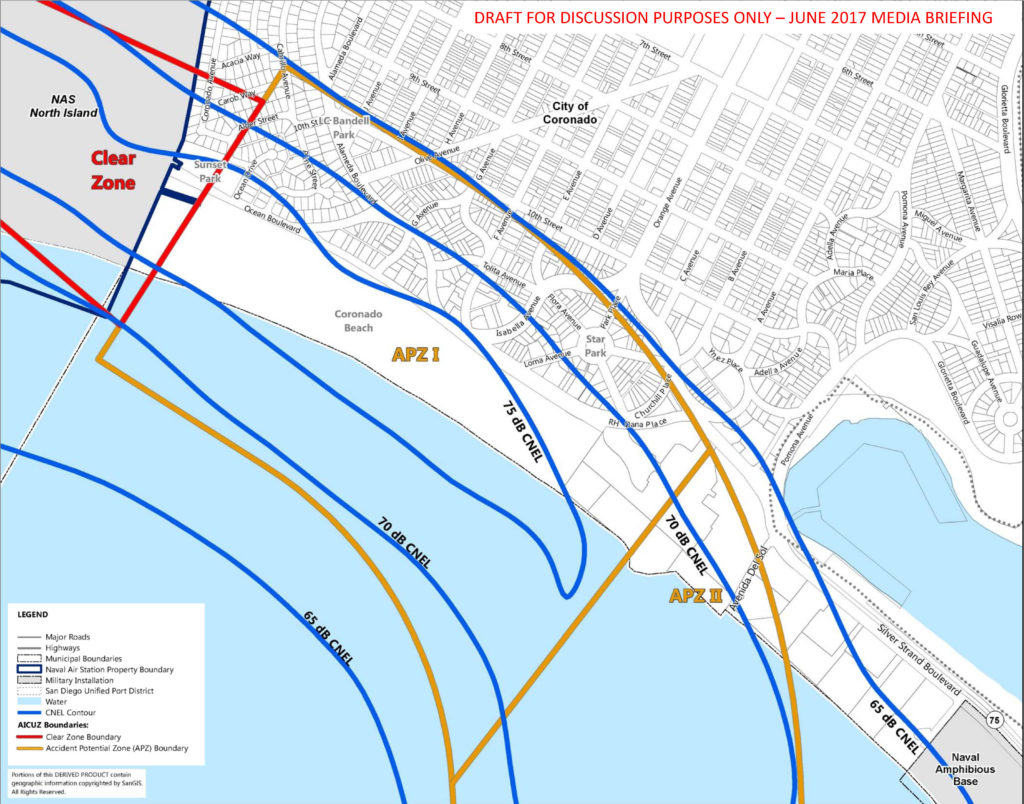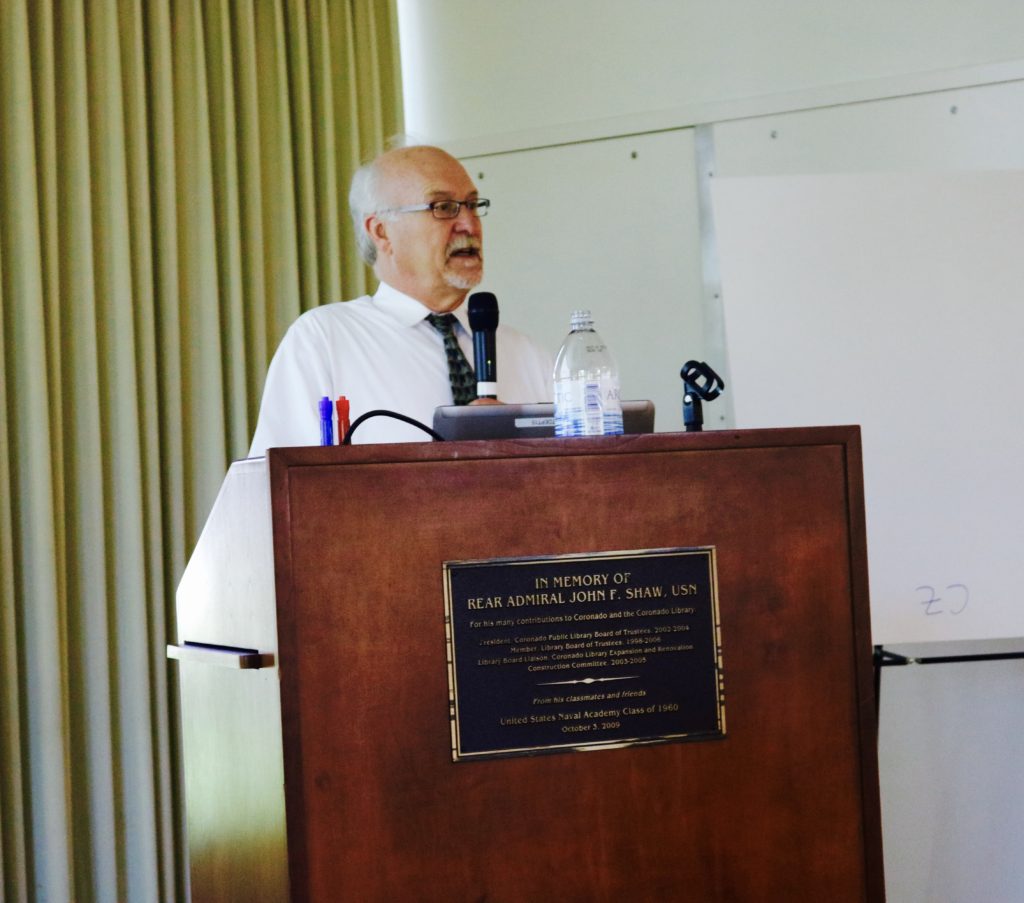
“What are you trying to save us from? Is there something the state knows that we don’t?,” asked former City Councilman Al Ovrom. He was referring to the Airport Land Use Compatibility Plan (ALUCP). On Monday evening, the San Diego Airport Land Use Commission (ALUC) staff held their 10th public, community informational meeting since the first one in March 2016.  This meeting was to present the Draft ALUCP. The ALUCP is based on the Navy’s Air Installations Compatible Use Zones (AICUZ) Update issued five years ago.
This meeting was to present the Draft ALUCP. The ALUCP is based on the Navy’s Air Installations Compatible Use Zones (AICUZ) Update issued five years ago.
“We are fully developed. We have schools, we have a hospital, a long-term care facility next to the hospital. We are not going to build anymore,” Ovrom said.
None of these facilities are in areas that would be affected by the draft ALUCP.
Ovrom wasn’t telling airport planners anything they didn’t already know. They understood from the beginning that Coronado was built out and that “you can’t undevelop something,” said Mark Johnson, the ALUC’s consultant for the project.

Ovrom is not the only one questioning the need for an ALUCP. The City of Coronado believes that not only it is not needed, it is not required.
“Pursuant to California law, if the State of California says something needs to be done (a mandate) and then does not fund the mandate, that mandate no longer exits. Our position is that without state funding, the preparation of the ALUCP for North Island is elective and not a mandate,” Coronado City Manager Blair King said. “We want the San Diego Airport Authority to consider this position.”
 After investing $4 million, this is something the airport authority is unlikely to do. Their position remains that the mandate is still in effect, according to Kim Sheredy, Senior Airport Planner. By next March the San Diego Regional Airport Authority will adopt an ALUCP.
After investing $4 million, this is something the airport authority is unlikely to do. Their position remains that the mandate is still in effect, according to Kim Sheredy, Senior Airport Planner. By next March the San Diego Regional Airport Authority will adopt an ALUCP.
There is no rule that a city has to adopt an ALUCP or to enforce it.
Chula Vista, Imperial Beach, Oceanside and Santee never revised their general plan to include their respective ALUCPs. Instead these cities refer individual development projects to the ALUC. In effect they “do comply with their ALUCP statutory obligations,” said Ed Gowen, Senior Airport Planner.
San Diego adopted ALUCPs into its code, but has overruled it on several occasions, according to Deanna Spehn, Policy Director for State Senator Toni Atkins.
For example, San Diego allowed the Lodge at Torrey Pines to expand. This took a super majority (4/5 of the city council) and the City of San Diego had to assume liability.
“Liability is determined by a court,” Councilwoman Carrie Downey was quick to point out at the meeting. “People can sue whoever they want to, be it an airport, airline, pilot or a municipality. It is up to a judge and jury to determine if they are responsible.”
These are all options for the future. For now city staff and stakeholders are working with the ALUC to address any lingering concerns. Once the airport authority adopts the plan the city will decide its next move.




